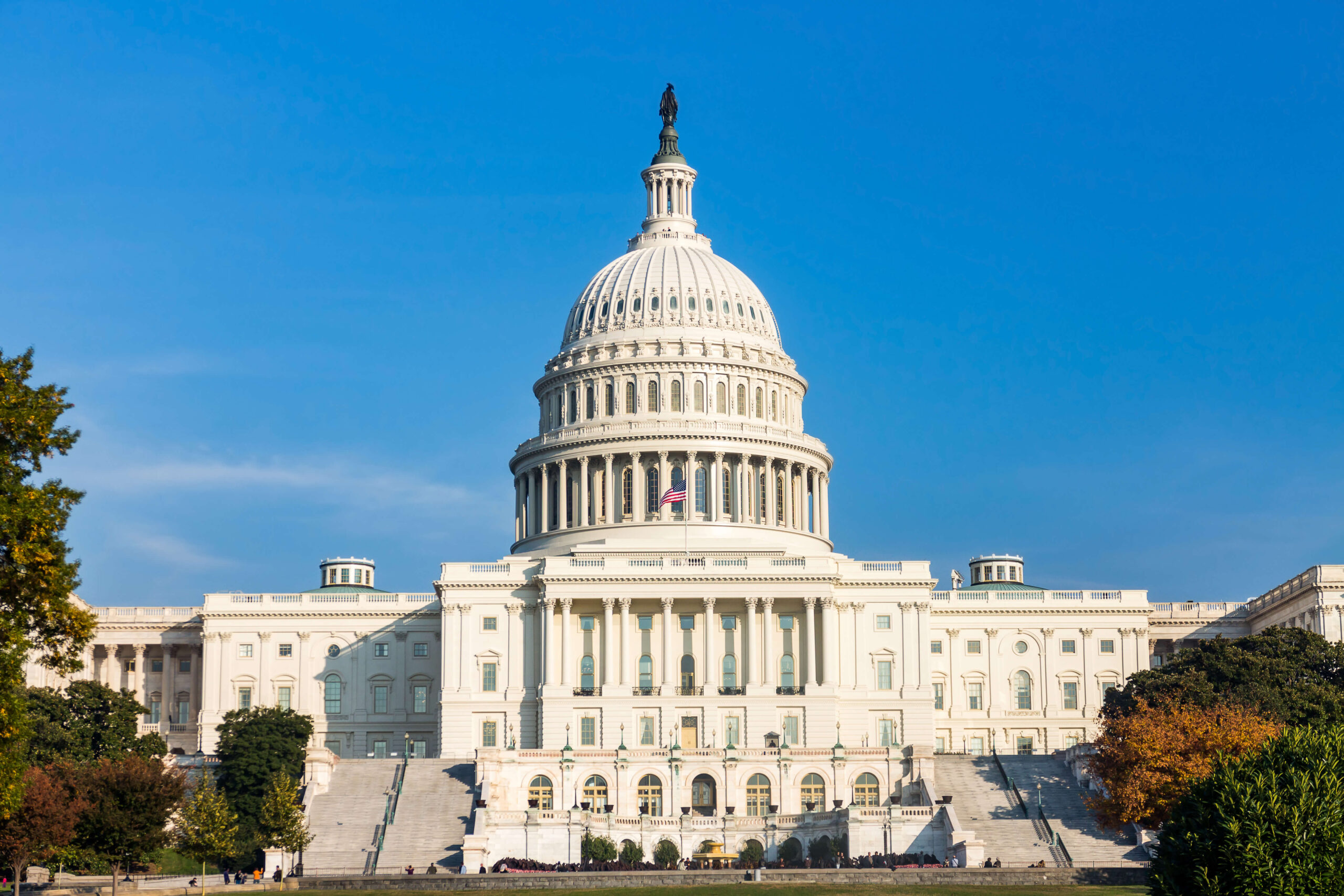When asked about the late afternoon shadows in old Yankee Stadium’s left field, Hall of Fame catcher Yogi Berra once responded, “It gets late early out here.” The saying could just as easily apply to the current state of our national politics. While only eight months into both a new Congress and a four-year presidential term, Democrats in Congress and the administration are racing against time to achieve policy victories before the calendar turns to 2022. At that point, political capital won’t go as far, as elected officials will quickly turn their focus to the November 2022 midterm elections.
Understandably, a priority for the administration is victory over COVID-19. Congress has passed six relief packages to address the pandemic and its economic fallout. But now President Joe Biden and his administration are going on offense and ordering employers to ensure that their workforces are vaccinated. The impact of these actions will reverberate within the employer community throughout the fall. At the same time, President Biden is trying to get his domestic agenda through Congress, where the 50–50 Democrat/Republican split in the U.S. Senate, combined with the legislative filibuster (which essentially requires 60 votes to pass legislation), makes it challenging to pass major labor and employment legislation. Set forth below is an examination of President Biden’s vaccination orders as well as three different pieces of labor and employment legislation in the current Congress, all of which have different odds of success.
President Biden Taps Employers to Fight COVID-19
On September 9, 2021, President Biden issued an executive order requiring federal contractors and subcontractors to comply with guidance issued by the Safer Federal Workforce Task Force. The guidance was released on September 24, 2021, and requires covered contractor employees to be vaccinated against COVID-19 by December 8, 2021 (there is no option to satisfy this requirement via testing, but accommodations may be available for employees with disabilities or sincerely held religious beliefs). Other elements of the guidance include the following:
- The guidance covers “service contracts and contract-like instruments” valued at more than $250,000, but does not cover “subcontracts solely for the provision of products.” Requirements of the guidance flow down to lower-tier subcontracts.
- Employees who will be required to be vaccinated include those who are “working on or in connection with a covered contract or working at a covered contractor workplace.” This includes remote employees and employees who might not even be working on or in connection with a covered contract.
For contracts in existence prior to October 15, 2021, compliance is required when “an option is exercised or an extension is made.” Contracts entered into on or after November 14, 2021, must contain a clause requiring compliance. For those contracts entered into between October 15 and November 14, 2021, “agencies must include the clause in the solicitation and are encouraged to include the clause in contracts awarded during this time period but are not required to do so unless the solicitation for such contract was issued on or after October 15.”
Also on September 9, 2021, President Biden announced that the Occupational Safety and Health Administration (OSHA) would be issuing a second emergency temporary standard (ETS) to address the COVID-19 pandemic. The agency’s first COVID-19 ETS, issued on June 10, 2021, applies only to healthcare settings and focuses on prophylactic measures such as personal protective equipment, cleaning, social distancing, and masking. Pursuant to the announcement, OSHA’s forthcoming ETS “will require all employers with 100 or more employees to ensure their workforce is fully vaccinated or require any workers who remain unvaccinated to produce a negative test result on at least a weekly basis before coming to work.”
While stakeholders await the ETS, questions abound concerning who pays for the tests, logistics and timing of vaccinations, and potential paid time off, among other topics. Moreover, expect lawsuits challenging OSHA’s authority to issue an ETS and whether COVID-19 presents a “grave danger” to employees. If a legal challenge results in the ETS’s being enjoined, compliance could be delayed for some time while litigation unfolds.
Congress: PRO Act Likely Stalled, but Other Bills Are on the Move
PRO Act. The Protecting the Right to Organize (PRO) Act, which has been passed by the U.S. House of Representatives, is a top legislative priority for organized labor and Democrats. At the moment, the bill—which would expand the test for joint-employer status, apply California’s controversial “ABC” test to independent contractors, invalidate right-to-work laws, limit employers’ abilities to communicate to employees the pros and cons of unionization, and allow for secondary boycotts, among other provisions—has 47 cosponsors in the Senate (all Democrats and Independents). Senate Majority Leader Chuck Schumer (D-NY) has promised that he will bring the bill to a vote if it receives 50 cosponsors, but Senators Kyrsten Sinema (D-AZ), Mark Kelly (D-AZ), and Mark Warner (D-VA) remain as holdouts. Even if these three senators end up supporting the bill, Democrats do not have enough votes to overcome a Republican filibuster. Thus, passage of the PRO Act remains a long shot (as long as the filibuster remains), but employers should be wary of efforts to enact its provisions through other pieces of legislation or via the administrative process.
Pregnant Workers Fairness Act. Unlike the PRO Act, there is significant bipartisan support for the Pregnant Workers Fairness Act (PWFA). The bill is also backed by members of the business community, such as the U.S. Chamber of Commerce and the Society for Human Resource Management. The PWFA would clarify protections for pregnant workers under federal antidiscrimination laws and fill in the gaps between Title VII of the Civil Rights Act of 1964, the Pregnancy Discrimination Act, the Americans with Disabilities Act, and the Family and Medical Leave Act. More specifically, the bill would require employers to provide reasonable accommodations for pregnant workers, such as assistance with heavy lifting and more frequent bathroom breaks. In May 2021, the PWFA overwhelmingly passed the House of Representatives, and was subsequently approved (by a 19–2 vote) by the U.S. Senate Committee on Health, Education, Labor and Pensions. The bill now awaits a vote on the Senate floor, and its bipartisan support bodes well for eventual passage and transmission to the White House for President Biden’s signature.
Build Back Better Act. Facing the Senate legislative filibuster, Democrats have turned to the arcane budgetary reconciliation process in an effort to pass major portions of President Biden’s domestic agenda. Because reconciliation bills cannot be filibustered, the process offers Democrats an opportunity to advance “human infrastructure” measures in the Build Back Better Act (e.g., expansion of Medicare and Medicaid, climate change initiatives, funding for universal prekindergarten and childcare, and other measures) without input or assistance from Republicans. However, only legislative proposals that directly impact the federal budget can be included in the reconciliation process. Democrats are hopeful that the Senate parliamentarian will allow the following provisions in the current version of the Build Back Better Act to remain in the bill going forward.
- Federal Paid Leave. The bill creates a taxpayer-funded, 12-week paid family and medical leave benefit for all workers that would begin in July 2023 (there would be no phase-in period). The language also provides reimbursement for states continuing to operate qualifying preexisting paid leave laws, as well as for employers that sponsor or provide qualifying paid leave (which includes, in part, job protection for employees on leave).
- Labor Provisions. The bill would enact civil penalties of up to $50,000 for each unfair labor practice (ULP) committed by an employer and up to $100,000 for certain repeat violations. The bill also permits civil penalties to be assessed against individual directors or officers of an employer. Additionally, the bill prohibits the following conduct via a similar civil penalty scheme without requiring an employer to cease the prohibited activity (presumably to attempt to adhere to the aforementioned rules limiting the scope of reconciliation bills to federal revenue and budget issues):
- “promis[ing], threaten[ing], or tak[ing] any action” that would “permanently replace” striking employees, discriminate against employees for supporting or participating in a strike, or lock out employees;
- misclassifying a worker as outside the scope of the definition of “employee” under the National Labor Relations Act;
- “requir[ing] or coerc[ing] an employee to attend or participate” in the “employer’s campaign activities”; or
- requiring class action arbitration agreements.
Finally, the bill would appropriate $5 million for the “implementation of systems to conduct electronic voting for union representation elections.”
- Wage and Hour, Child Labor, and Workplace Safety Issues. The bill would increase fines—from $1,100 to $20,740—on employers that repeatedly or willfully violate minimum wage or overtime prescriptions. The fines for unlawfully keeping employees’ tips would increase from $1,100 to $11,620. Civil penalties for violations of child labor prohibitions would also increase. Pursuant to the bill’s workplace safety provisions, the maximum penalty for a willful or repeat violation would increase from $70,000 (currently adjusted for inflation to $136,532) to $700,000, and the minimum penalty would increase from $5,000 (currently adjusted for inflation to $9,753) to $50,000. Caps on serious violations and failure to correct a violation would increase from $7,000 (currently adjusted for inflation to $13,653) to $70,000.
Of course, there is still a long way to go for the Build Back Better Act, so these provisions are subject to change. At the time of this writing, the bill has not even passed the House of Representatives, where Democrats enjoy a slim majority. Passage in the U.S. Senate—where Majority Leader Schumer literally cannot afford to lose a single vote—may prove even more challenging. Even so, employers should consider monitoring this bill as it works its way through Congress, as it could potentially enact unprecedented changes to federal labor and employment policy. If not signed into law, or if the labor and employment provisions are stripped out, the bill provides employers with a road map of where progressive legislators want to move labor and employment policy. There could be future efforts to codify these provisions via other legislative vehicles.
In a matter of weeks, federal contractors will likely be implementing mandatory vaccination programs for their workforces. Other employers may be covered by OSHA’s new ETS. In Congress, pressing legislative deadlines, such as funding for the federal government and the need to extend the government’s borrowing authority, loom over the legislative landscape, and may impact the three bills described above. It is getting late early in Washington, D.C.




